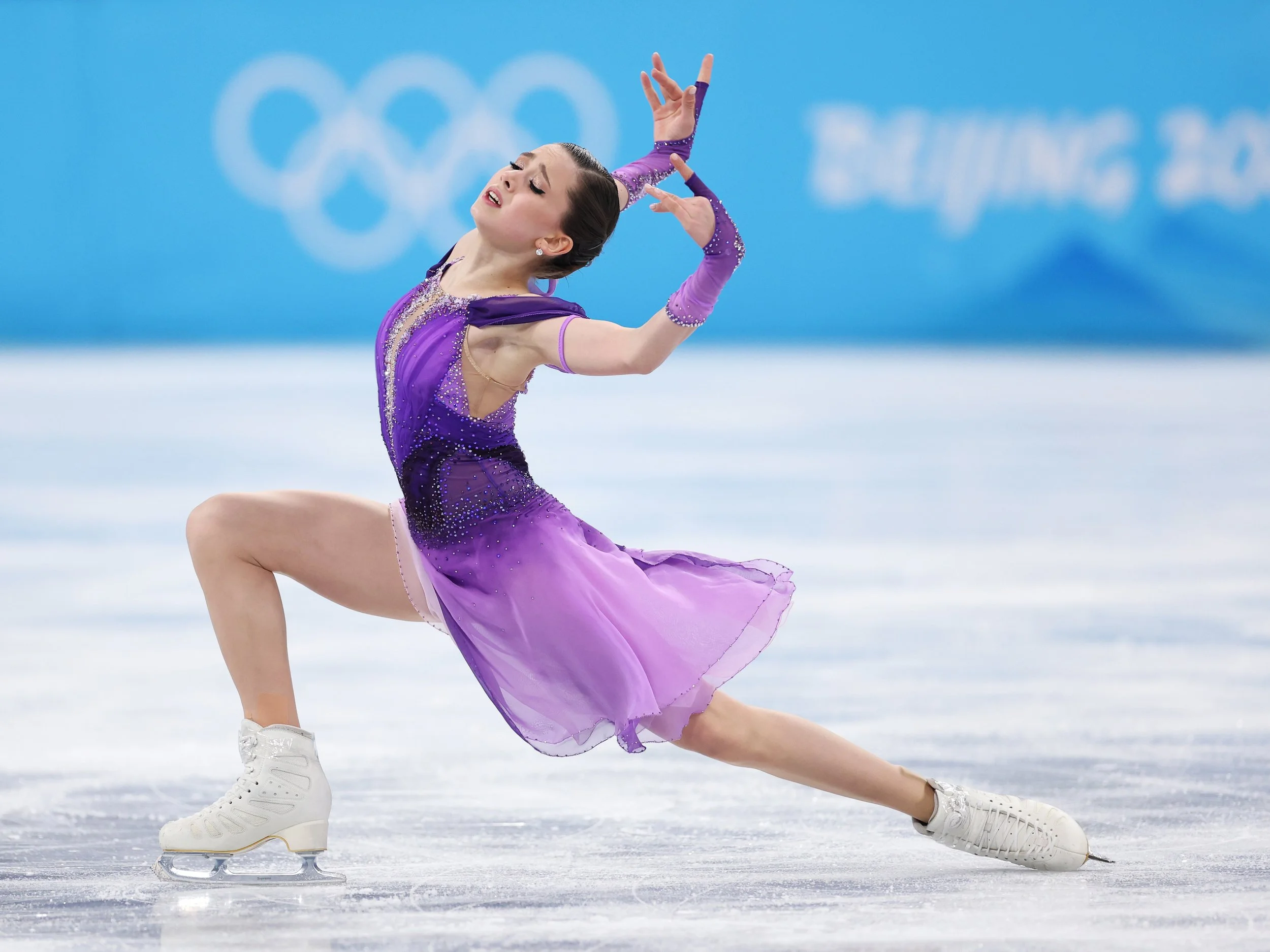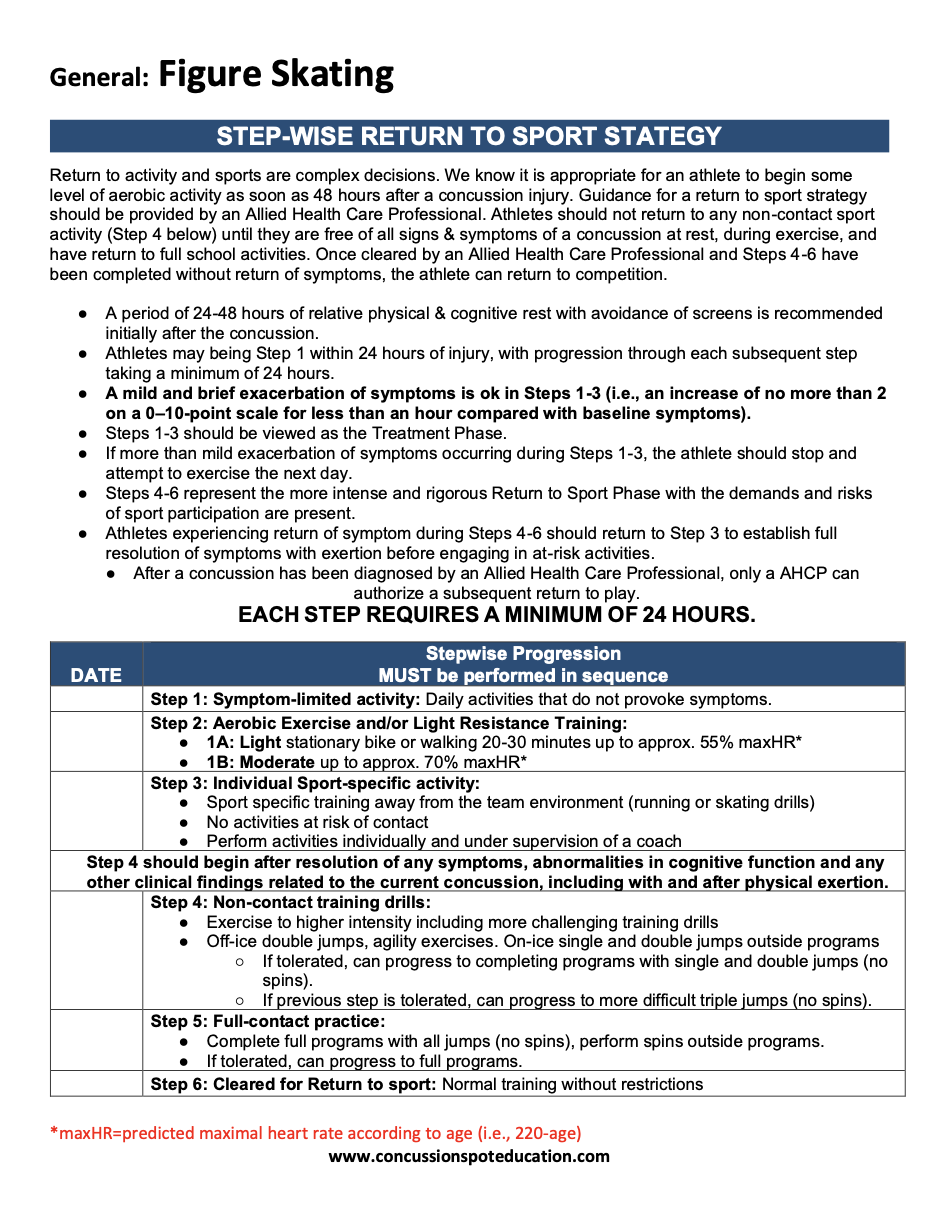

Figure Skating Concussion Return To Sport Protocol
The Figure Skating Concussion Return-to-Sport (RTS) Protocol is a comprehensive, sport-specific recovery framework designed to help figure skaters safely return to the ice following a concussion. Figure skating combines highly technical elements such as jumps, spins, footwork sequences, and rapid transitions performed on an inherently unstable, slippery surface. These demands require precise balance, spatial awareness, coordination, and cognitive focus, all of which can be affected by a concussion. This protocol addresses these unique challenges by providing a structured and gradual path to recovery that prioritizes brain health and athletic performance.
The protocol is divided into progressive phases, each targeting different aspects of recovery while increasing physical and cognitive demands. It begins with a period of symptom-limited rest where skaters engage only in daily activities that do not worsen symptoms. Once symptom stability is confirmed, light aerobic exercise such as walking or stationary cycling is introduced to promote circulation and overall health without increasing concussion symptoms.
As recovery progresses, dryland training incorporating balance exercises and skating-specific movements is added. This stage helps restore proprioception and neuromuscular control in a safe environment. Next, skaters return to on-ice activities without performing jumps or spins—focusing on stroking, footwork, and edge control to rebuild confidence on the ice while minimizing risk.
The following stages involve gradually reintroducing technical elements such as single and double jumps, spins, and more complex footwork sequences. Training intensity and duration increase with close symptom monitoring. The final phase allows full return to practice and competition only after the skater is symptom-free at rest and during exertion, and after clearance by a qualified healthcare provider.
Throughout the process, if symptoms reoccur, skaters are advised to return to the previous phase and rest before attempting to progress again. This cautious and individualized approach helps reduce the risk of reinjury, supports full neurological recovery, and ensures figure skaters return to their sport with the confidence and physical readiness required to perform safely and effectively. The protocol serves as a vital tool for athletes, coaches, and healthcare professionals committed to athlete safety and long-term brain health in figure skating.
The Figure Skating Concussion Return-to-Sport (RTS) Protocol is a comprehensive, sport-specific recovery framework designed to help figure skaters safely return to the ice following a concussion. Figure skating combines highly technical elements such as jumps, spins, footwork sequences, and rapid transitions performed on an inherently unstable, slippery surface. These demands require precise balance, spatial awareness, coordination, and cognitive focus, all of which can be affected by a concussion. This protocol addresses these unique challenges by providing a structured and gradual path to recovery that prioritizes brain health and athletic performance.
The protocol is divided into progressive phases, each targeting different aspects of recovery while increasing physical and cognitive demands. It begins with a period of symptom-limited rest where skaters engage only in daily activities that do not worsen symptoms. Once symptom stability is confirmed, light aerobic exercise such as walking or stationary cycling is introduced to promote circulation and overall health without increasing concussion symptoms.
As recovery progresses, dryland training incorporating balance exercises and skating-specific movements is added. This stage helps restore proprioception and neuromuscular control in a safe environment. Next, skaters return to on-ice activities without performing jumps or spins—focusing on stroking, footwork, and edge control to rebuild confidence on the ice while minimizing risk.
The following stages involve gradually reintroducing technical elements such as single and double jumps, spins, and more complex footwork sequences. Training intensity and duration increase with close symptom monitoring. The final phase allows full return to practice and competition only after the skater is symptom-free at rest and during exertion, and after clearance by a qualified healthcare provider.
Throughout the process, if symptoms reoccur, skaters are advised to return to the previous phase and rest before attempting to progress again. This cautious and individualized approach helps reduce the risk of reinjury, supports full neurological recovery, and ensures figure skaters return to their sport with the confidence and physical readiness required to perform safely and effectively. The protocol serves as a vital tool for athletes, coaches, and healthcare professionals committed to athlete safety and long-term brain health in figure skating.
